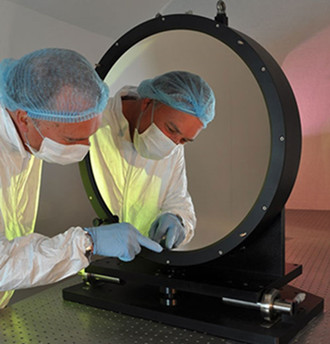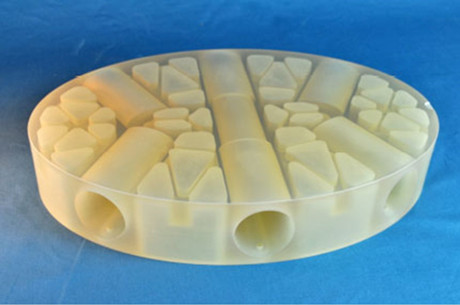Home > News > Optical Surfaces: Challenging Prototype & Custom Optics
Optical Surfaces: Challenging Prototype & Custom Optics
- Optical Surfaces Ltd. is internationally known for producing high-precision custom and prototype optics.
With its facilities deep underground in an area excavated from solid chalk – Optical Surfaces operates from an environment where the temperature is naturally constant, and vibration is extremely low. These are important considerations when making, mounting, and testing ultra-high precision optics.

Leveraging these natural advantages Optical Surfaces routinely produces high precision off-axis parabolic, spherical, and flat mirrors, etalons, aspherics, reference flats, windows, collimators, and beam expanders for the most demanding applications. With such stable conditions testing, particularly with long path lengths, becomes quantifiable and reliable. Investment in large aperture interferometers allow detailed direct testing of optics up to 600mm in diameter. Topographic and fringe analysis provides precise testing of surface roughness and confirms the wavefront of various surface forms. A rolling program for calibration of test optics where possible to national standards ensures that the quality of prototype and custom optics from Optical Surfaces is second to none.

Combining these natural advantages, with its team of experienced and knowledgeable optical craftsmen, Optical Surfaces Ltd has produced ultra-high precision prototype and custom optics that lie behind technological breakthroughs in areas including fundamental physics, astronomy, space, defence, medical, material sciences and the environment.
For further information on high precision prototype and custom optics please visit www.optisurf.com or contact Optical Surfaces Ltd. on +44-208-668-6126 / sales@optisurf.com.
Optical Surfaces Ltd has been producing large diameter optical components and systems for more than 50 years. The company’s ISO 9001:2015 approved manufacturing workshops and test facilities are deep underground in a series of tunnels excavated in solid chalk where temperature remains constant, and vibration is non-existent. With such stable conditions testing, particularly with long path lengths, becomes quantifiable and dependable.
-----------
Worldwide HQ
Optical Surfaces Ltd.
Godstone Road
Kenley
Surrey CR8 5AA
UK
tel. +44-208-668-6126
email sales@optisurf.com
web http://www.optisurf.com
Related News
- Cold Chain Technologies Expands Industry-Leading Reusable Portfolio 12/11/2025
- Sabin Vaccine Institute’s Investigational Marburg Vaccine Delivered to Ethiopia 12/9/2025
- Cutting-edge Product for Stem Cell Research and Human Embryo Modelling 12/4/2025
- Thermo Fisher Scientific Launches Industry-First, Multi-Parameter Molecular Assa 11/20/2025
- Biotech Fluidics: Solvent Recyclers Improve HPLC System Sustainability 11/20/2025
- Titan Enterprises’ Beverage Flow Meters: Turbine vs. Ultrasonic – Which is Right 11/19/2025
- Gentle and Rapid Detachment of Even Delicate Adherent Cells 11/18/2025
- Simplifying Beam Diagnostics with a Laser Beam Reducer 11/18/2025
- Radiation Tolerant Lenses for Nuclear Monitoring Systems 11/14/2025
- SI Sensors: Lower Cost Custom CMOS Image Sensors 11/13/2025


